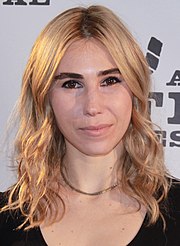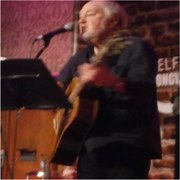Design
Design
Personality
Chart Properties
Your Cross represents the specific theme of your life. This cross embodies your unique potential & the lessons you're here to learn, providing a roadmap to fulfilling your life purpose.
We use the UTC birth time and date to do the calculations required to generate your Human Design chart.
Buy Tokens
Pay as you use, no expiry and no subscription required.Prompt Ideas
Get inspired with some epic prompt ideas.Hermann Hesse's Biography
German writer whose popularity extended well beyond his lifetime. He was best known for “The Glass Bead Game,” “Steppenwolf” and “Siddhartha.” He was considered a guru to the youth from 1905 until his death and beyond, one of the most inspirational writers of the 20th century.
Hesse’s father, Johannes Hesse, was born in 1847 of Russian descent, becoming a Swiss citizen. Formerly a missionary, he became director of a publishing house. His mother was the daughter of a missionary, born in India in October 1842. Her second marriage was to Johannes Hesse on 22 November 1874. Six children resulted from this union (she had three from first marriage, two surviving, and had been widowed in 1870). Herman was her second born child with Johannes. From the time Herman was age four to nine, the family resided in Basel, but they returned to Germany where he lived until he was 13. He then attended Latin school to prepare for his examinations, having to give up his Swiss citizenship in order to be accepted in the German seminary.
He stayed in the seminary only seven months, fleeing “in order to become a writer.” He attempted suicide at 15 and was sent to a clinic for nervous diseases. He was later admitted to a German gymnasium. At 16, he passed the selection service exam and volunteered for one year of service. Following his service he took an apprenticeship in a clockwork factory in Calw, Germany. The next year he apprenticed in a bookstore.
At age 22, Hesse began writing while employed in Basel as a stock clerk in a rare bookstore. He made a first trip to Italy and wrote poems dedicated to his mother, who died in 1902.
In 1904, Hesse was writing for journals and newspapers. His first books were published during this period and he made a first trip to India. Between 1912-’14 he moved to Bern, continuing to write. He became co-editor of a German liberal weekly. Rejected by the German army, he edited a paper for German prisoners of war.
Between 1915-’19 it was a period of extreme stress. His dad died and his wife and youngest son became ill, which led to his having a nervous breakdown. During psychiatric care with Carl Jung and J.B. Lang, he developed a lifelong friendship with these outstanding men. More books were published. The period between 1919-21, he moved to Montagnola and his first real successes appeared with “Demian.” Due to a sudden crisis he was unable to write and went into deep analysis with Jung. His insights resulting in “Siddhartha,” published in 1922. In 1924 he regained his Swiss citizenship. “Steppenwolf” was published in 1927. Between 1930-45, he started “Glass Bead Game.” It was published in 1942 during the anxious war years, as his wife and many friends were Jewish. He received the Nobel prize in 1946. An alcoholic, Hesse was afflicted with bouts of hypochondria, depression, and thoughts of suicide throughout many years of stress and anguish.
Hesse married Maria Bernoulli, ten years his senior, on 2 August 1904 and they moved to a village on Lake Constanz. When their son Bruno was born 9 December 1905, he built a house for the family on the lake. Two more sons were born: Heiner, March 1909 and Martin, 27 July 1911. In 1916 he divorced Maria.
Ruth Wenger, the daughter of a writer and 20 years his junior, became his wife on 11 June 1924. The marriage never worked well and she filed for divorce in 1927. Later, Ruth became ill with TB and around the same time Maria also became very sick and was committed to an asylum. The boys were farmed out to foster care. In 1927 he met and courted his future wife, Ninon Dolbin, and started the construction of his beloved house, Casa Bodmer.
Though not diagnosed immediately, the beginning of leukemia appeared in 1947. Five weeks after a large 85th birthday celebration, Hesse died of a brain hemorrhage and leukemia on 9 August 1962 in Montagnola, Switzerland. He is buried in San Abbondio.
Link to Wikipedia biography
Hermann Hesse
Your Cross represents the specific theme of your life. This cross embodies your unique potential & the lessons you're here to learn, providing a roadmap to fulfilling your life purpose.
We use the UTC birth time and date to do the calculations required to generate your Human Design chart.







